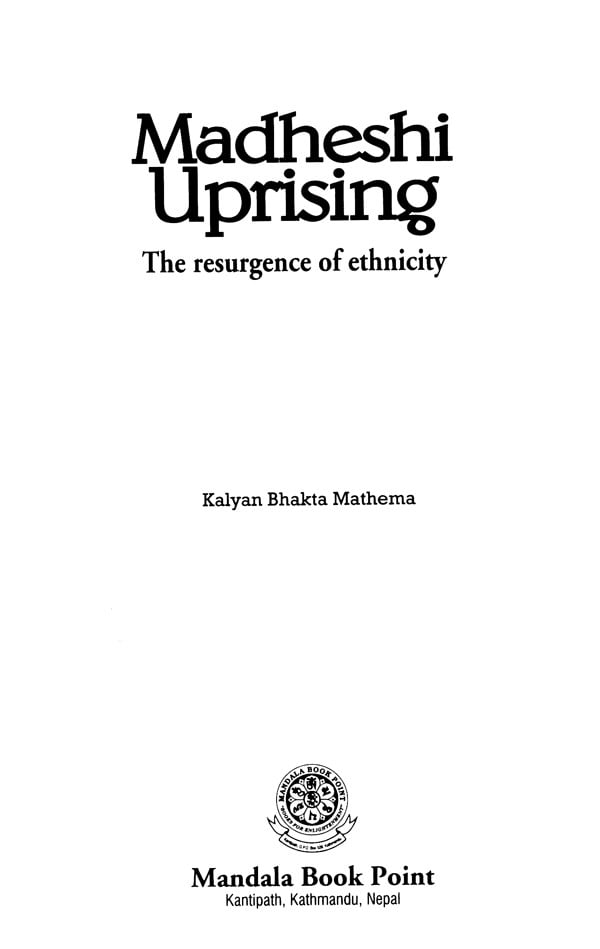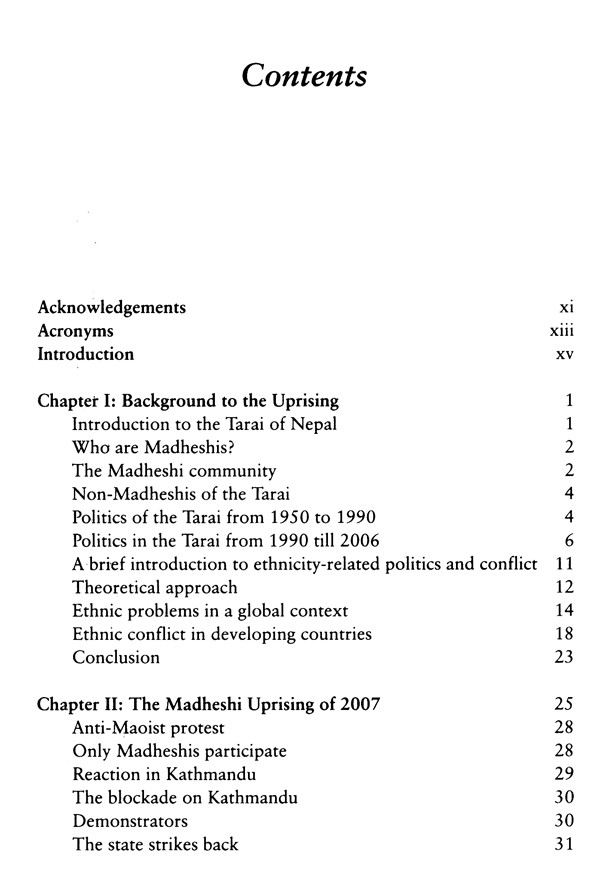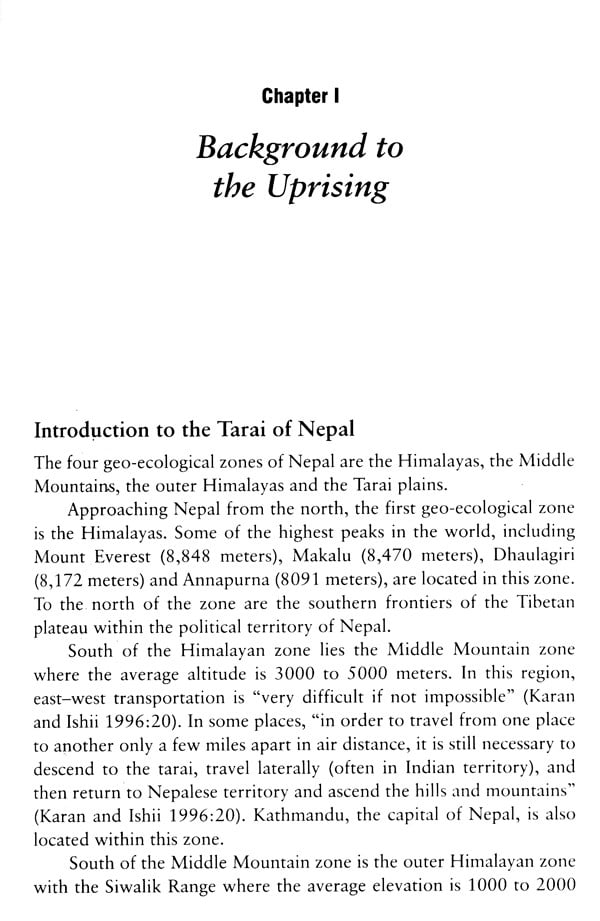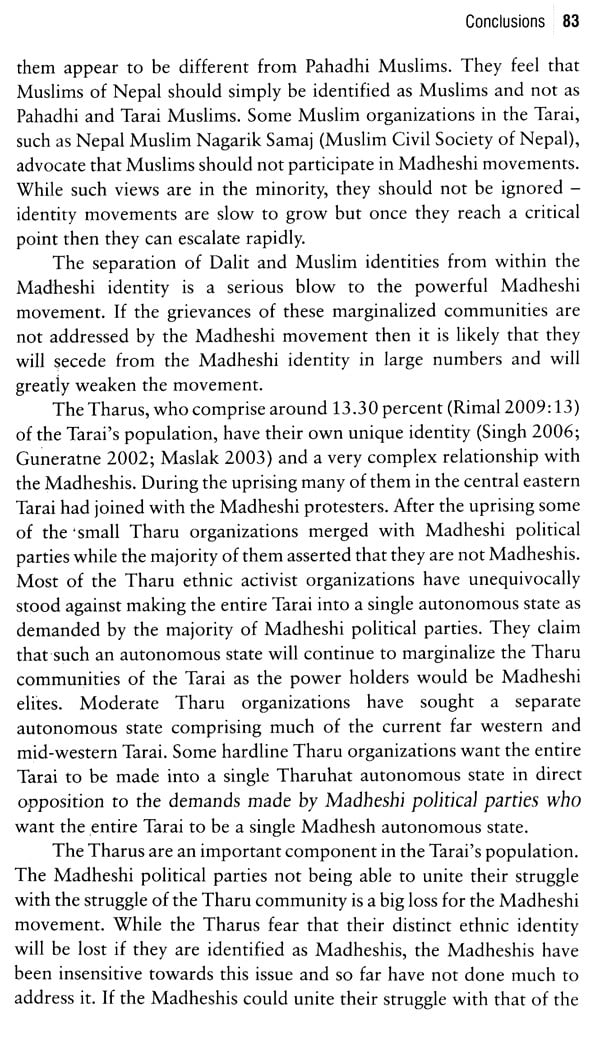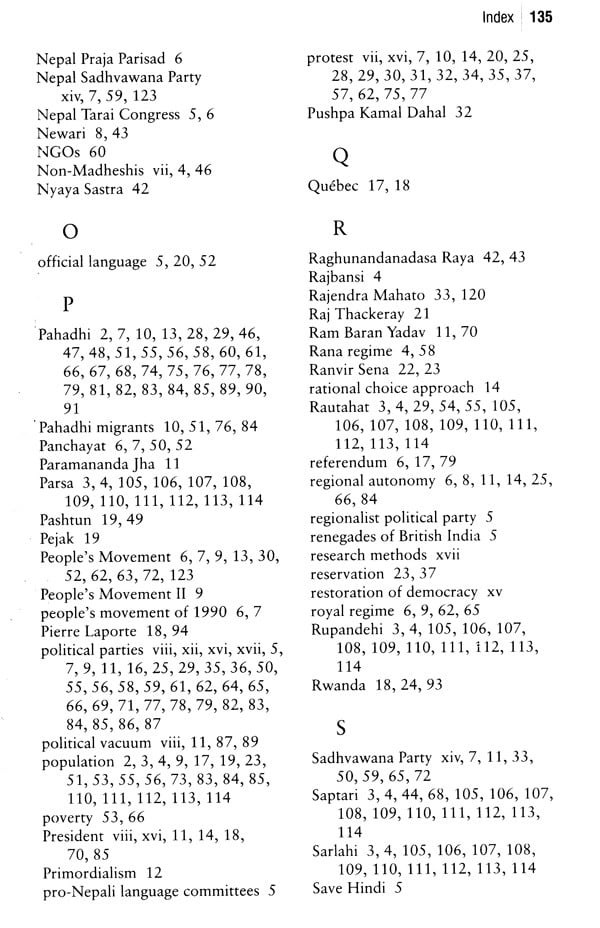
Madheshi Uprising- The Resurgence of Ethnicity
Book Specification
| Item Code: | UAT792 |
| Author: | Kalyan Bhakta Mathema |
| Publisher: | Mandala Book Point, Nepal |
| Language: | English |
| Edition: | 2011 |
| ISBN: | 9789994655168 |
| Pages: | 150 |
| Cover: | PAPERBACK |
| Other Details | 8.50 X 5.50 inch |
| Weight | 210 gm |
Book Description
This book analyzes the 2007 Madheshi uprising, the identity based antagonisms that fueled it, complex motivations of the participants of the uprising, the insensitivity and the political miscalculations of the Nepalese state and intelligentsia. It offers a multifaceted examination of Nepal's Tarai region's complex social diversity, political history, and process of alienation of Madheshis from the rest of Nepal.
This uprising consisted of hundreds of spontaneous protests by people from all segments of the Madheshi community: young and old, female and male, professional and non-professional, religious and secular, Hindu and Muslim, Brahmin and Dalit, Yadav and non-Yadav. Notwithstanding the mostly peaceful nature of the protests, sporadic but gruesome ethnic violence broke out in some places. Extremist groups from different ideological backgrounds, who saw this movement as an opportunity to use it for their advantage, infiltrated the rallies to incite protesters to be violent, although violence itself was not the main feature of this uprising. The government employed security forces to try to control the situation and quell the movement but they proved ineffective.
**Contents and Sample Pages**
